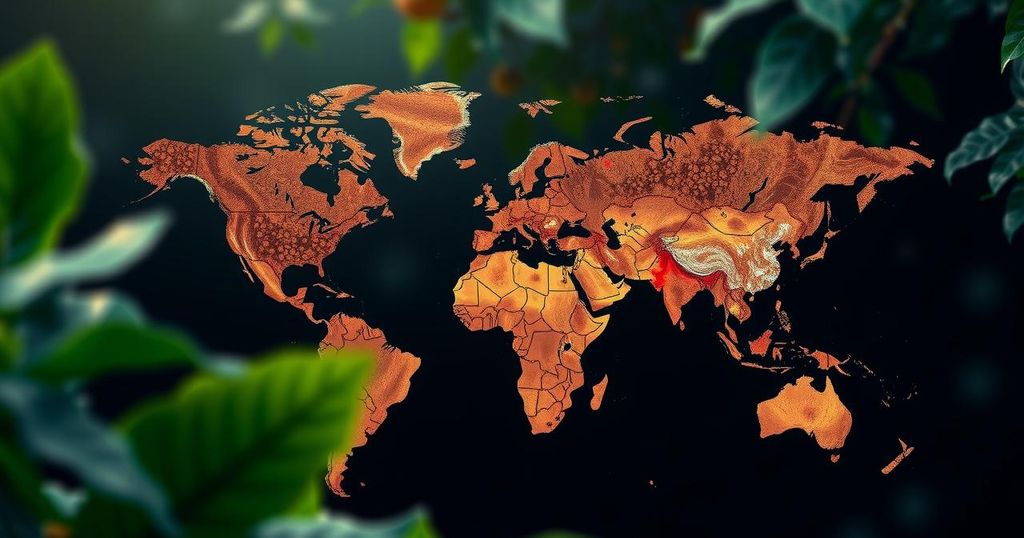The Impact of Climate Change on Global Chocolate Production and Pricing

Climate change is threatening cacao tree survival, leading to higher chocolate prices. Key cocoa-producing countries in the equatorial region are experiencing changed environmental conditions, with temperature and humidity shifts affecting production. Approximately 90% of global cocoa beans are produced in this area, highlighting the need for sustainable cocoa initiatives to combat growing challenges.
Climate change has adverse effects on cacao cultivation, leading to increased mortality among cacao trees, which in turn escalates the price of chocolate. Variations in temperature and increased humidity due to rainfall within a 40-degree band around the equator disrupt typical growing conditions. This region, vital for cacao production, extends 20 degrees north and south of the equator, encompassing key cocoa-producing countries such as Brazil, Côte d’Ivoire, Ghana, and others, which collectively account for approximately 90% of the world’s cocoa yield, estimated at around five million tonnes annually as reported by the Swiss Platform For Sustainable Cocoa.
Understanding the relationship between climate change and cocoa production is crucial as it highlights the challenges faced by farmers and the chocolate industry. Cocoa trees thrive under specific climatic conditions, and deviations from these due to climate change threaten their survival. Moreover, as demand for chocolate persists, the implications of reduced supply compounded by rising production costs need addressing, particularly through sustainable cocoa practices in major producing regions.
In summary, the effects of climate change are severely impacting cocoa production, resulting in increased chocolate prices and highlighting the urgency for sustainable agricultural efforts. As critical cocoa-producing countries face environmental challenges, it is imperative for the industry to adopt practices that promote sustainability to ensure future chocolate availability and reasonable pricing for consumers.
Original Source: www.perishablenews.com






